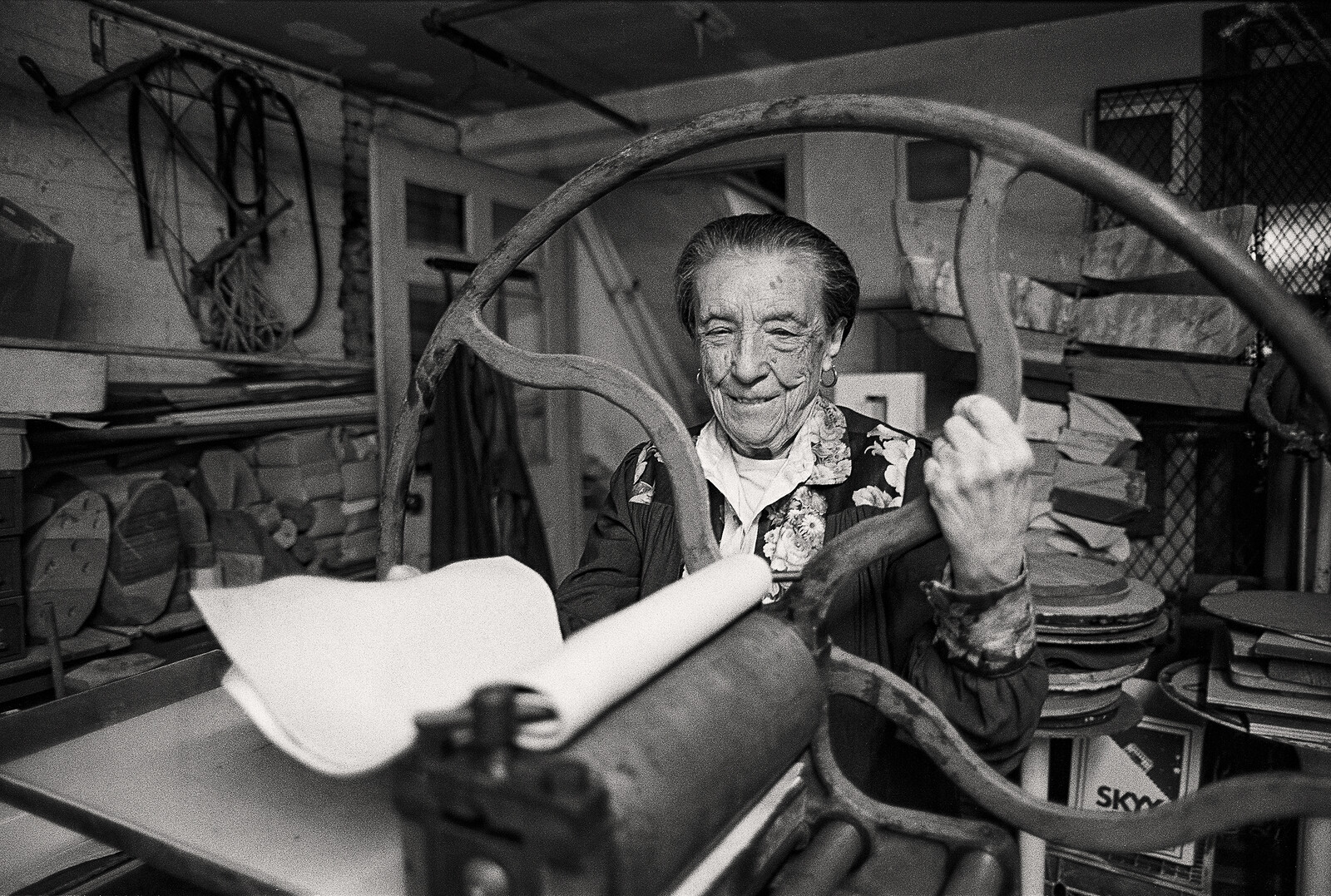After eight years of research and documentation, The Museum of Modern Art’s website, Louise Bourgeois: The Complete Prints & Books, is now live in its entirety. Over the years, iterations of the site have been launched in stages, and newly cataloged works have been uploaded as completed. Now, the full extent of Bourgeois’s printmaking—some 5,410 individual sheets—is available online, demonstrating the significance of this medium within her overall practice.
Origins of the Bourgeois website
Louise Bourgeois (1911–2010) had a long relationship with MoMA, dating to founding director Alfred H. Barr Jr., and his acquisition of her first book of engravings, He Disappeared into Complete Silence, in 1947, and her sculpture, Sleeping Figure, in 1951. In 1982, Bourgeois’s first retrospective sculpture exhibition was presented at MoMA, organized by curator Deborah Wye, who has also led the team for this website. In 1990 the artist donated an archive of printed work then in her possession to MoMA and promised examples of all future prints as well. Wye organized an early print retrospective in 1994 and co-authored, with Carol Smith, a catalogue raisonné of Bourgeois’s prints to date. MoMA’s collection now comprises 3,271 Bourgeois prints, in addition to a broad range of sculpture and drawings from all periods of her long career.
Bourgeois and printmaking
Bourgeois began her artistic career as a painter and printmaker in the late 1930s and 1940s; it was only later in the 1940s that she turned definitively to sculpture. She did not come back to printmaking until the late 1980s. From then on—until 2010, the last year of her life—she was actively engaged with the medium. During this period, Bourgeois collaborated with printers and publishers who came to work with her at her home/studio on 20th Street, where she had installed two small printing presses. The give-and-take of these collaborations proved stimulating for Bourgeois and lent a new dimension to her creative process. She also enjoyed the social relationships that evolved, especially in her last decade, when she stopped leaving the house due to longstanding anxieties and, later, the physical infirmities of very advanced age.
Bourgeois’s creative process
Bourgeois’s art was motivated by her emotions and functioned as a kind of tool to release and understand deeply troubling feelings that plagued her throughout her life. She suffered from painful memories, as well as loneliness, anger, jealousy, and despair—states of mind that seem to radiate from her works. The related themes of her art—fashioned into symbols or visual metaphors—were remarkably consistent across the decades. Printmaking allowed her to continually rework her compositions, a process conducive to her probing investigations; some printed works evolved through 20, 30, or more states and variations. The website catalogue is structured to distinctly show this evolution. And, while its detailed documentation is aimed at researchers, the site’s many interactive features are highly accessible to all with an interest in Louise Bourgeois and her art.
The documentation process at MoMA
When Bourgeois began donating her prints to MoMA in 1990, the staff started recording and researching the works and her process. Upon Wye’s retirement as chief curator of the Department of Prints and Illustrated Books in 2010, development of a website catalogue raisonné began in earnest, with Wye continuing at MoMA for this project. Primary catalogers during this period were Katie Campbell, Christina Costello, Sewon Kang, and Majida Mugharbel. This curatorial team worked hand-in-hand with product manager Maggie Lederer and others from the Department of Digital Media, and with staff from the Department of Collection and Exhibition Technologies. The firm Kiss Me I’m Polish was responsible for Web design, and the firm CogApp for Web development. The Louise Bourgeois Studio and The Easton Foundation were also equal partners in this endeavor.
Visit moma.org/bourgeoisprints to learn about Louise Bourgeois’s printmaking in the context of her overall practice.


